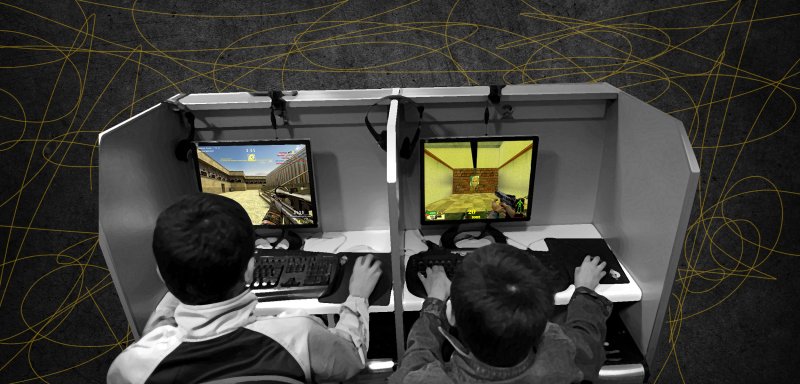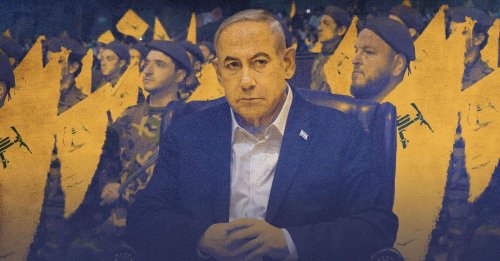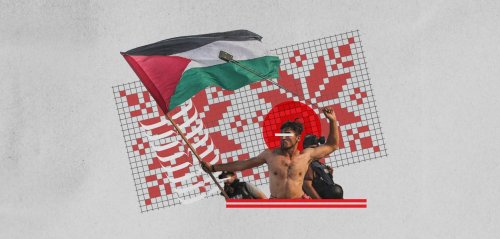It’s no secret that many people today consider video games a form of mindless children's entertainment. However, certain titles are invaluable cultural artifacts that offer unique insight into the sociopolitical milieu that led to their creation while teaching us valuable lessons about our world. No example of this phenomenon is more pronounced than when the Central Internet Bureau of Hezbollah, a Lebanese paramilitary group, produced Special Forces, a local first-person shooter (FPS) that sold thousands of copies to gamers across the Middle East.
Following in the precedent set by Dar Al-Fikr’s Under Ash (2001), which allowed players to join the First Intifada as a Palestinian resistance fighter who progressed from throwing stones to commanding high-level military vehicles, Special Forces was created to counter the influence of foreign video games, according to Hezbollah official Mahmoud Rayya.
Conceived right after the Israeli occupation of Southern Lebanon ended, Hezbollah collaborated with the developer Hadeel using the open-source Genesis3D engine over a dev cycle lasting over two years. Eventually, it was released by the distributor Sunlight on 16 February 2003 in Lebanon, Syria, Bahrain, the United Arab Emirates, and Iran. In the game, eager players assume the role of a resistance fighter in Hezbollah tasked with defeating Israeli soldiers in simulations of real-life operations that had occurred during the conflict. Hadeel developers were provided access to critical material from Hezbollah's archives, including films and maps, which were used to recreate combat scenarios, mimicking the topography, weather, and even landmine arrangements of the skirmishes in an attempt at social realism.
One month after its release, an updated version allowed multiple players to link computers over LAN with an ethernet cable, allowing for multiplayer sessions. Neighborhood internet cafés were popular at the time due to Lebanon’s slow bandwidth and the unfortunate fact that most of the population could not afford the latest hardware. Teenagers gathered in hangout spots like Champions in Haret Hreik to play together in their spare time. This allowed Arab youth from similar backgrounds and resonant ideologies to connect in third spaces, airing out their frustrations with the imperial forces in the virtual battlefield rather than partaking in the more popular alternatives that had members of their communities depicted as primitive antagonists waiting to be gunned down by the all-American super-soldier.
Developers were provided access to critical material from Hezbollah's archives, including films and maps, which were used to recreate combat scenarios, mimicking the topography, weather, and even landmine arrangements of the skirmishes in an attempt at social realism.
Special Forces missions kick off with a text briefing in Arabic, English, French, and Farsi at a time when the West and Japan relied on in-game cutscenes for storytelling. Gameplay, as was standard with first-person shooters of the time, is primarily combat-driven, allowing players to alternate between a knife, a pistol, hand grenades, and, of course, a Kalashnikov rifle against an onslaught of overpowered IDF soldiers with Merkava tanks and Boeing AH-64 Apaches at their disposal. Even though Kalashnikov rifles were commonly featured in Western releases, often in the hands of “terrorists,” the choice of an AK-47 as the primary weapon in Special Forces comes as no surprise, as the rifle featured on the Hezbollah flag is meant to be reminiscent of a Kalashnikov rifle symbolizing armed resistance. Barring sparse instances of pro-Intifada and anti-Zionist iconography, Special Forces wouldn’t be unlike any of the first-person shooters that came out years earlier if played without reading the text briefing.
Condemned by Israeli and Western organizations as a propagandistic recruitment tool indoctrinating Shiite Lebanese adolescents into a transnational ‘terrorist organization,’ Special Forces and its sequels were, on the other hand, hailed by the regional Axis of Resistance as a vital piece of ‘edutainment’ that offered an underrepresented perspective on modern warfare. The game countered the predominantly pro-Western narrative found in American video games featuring the US military. It is telling that what turned Western and Israeli heads was the infamous training segment where players practiced shooting at posters of prominent Israeli figures, such as former Israeli Minister of Defense Shaul Mofaz, former Israeli Prime Minister Ehud Barak, and then-Israeli Prime Minister Ariel Sharon, to collect points for every successful target. Completing all levels awarded the player with a digital medal and an electronic certificate from the Secretary-General of Hezbollah at the time, Hassan Nasrallah, as well as a commemoration of martyrs whose lives were lost to the occupying forces.
A sequel, Special Forces 2: Tale of the Truthful Pledge, was officially released on 16 August 2007, with a local exhibit about the conflict that led to several hundred pre-orders in Lebanon. Under a new studio banner, Might 3D, members of the original team used an unlicensed version of the CryEngine for its graphics to re-enact the July 2006 War with assets from German developer CryTek’s Far Cry (2004). Improvements included a fourth level with an expanded arsenal and resource management. More than a decade later, a spiritual successor called Sacred Defence—Protecting the Homeland and Holy Sites was released, which, according to Hassan Allam, one of the game's developers, reflected Hezbollah's polarizing “experience in Syria.” By this time, the outrage over the series had died down, with American news outlets covering it more as a curio for the clickbait crowd as opposed to a tool for indoctrination that could collapse Western civilization. It had become clear that although Special Forces was an innovative instrument in spreading the Party of God’s message amongst fledglings in its ranks, it did not have the resources that would have provided a suitable counter-narrative for video games produced by or with the aid of the American government, like America’s Army and its ilk. Nor did it garner the local and international support that video games, developed with the assistance of former Israeli officials, such as Jane's IAF: Israeli Air Force are privileged with, to catalyze a change in the public’s perception of the paramilitary group outside of its existing base.
Arab youth from similar backgrounds and resonant ideologies connected in these third spaces, airing out their frustrations with the imperial forces in the virtual battlefield rather than partaking in the more popular alternatives that had members of their communities depicted as primitive antagonists waiting to be gunned down by the all-American super-soldier.
There is, however, still valuable insight to learn from this strange happenstance that seems to have been forgotten in all the furor that Lebanon has experienced since the turn of the millennium. Early on, Hezbollah was recognized for its innovative practices among regional paramilitary groups, especially with regard to its approach to its marketing apparatus, leading to its quick ascension in stature in Lebanon and the wider Arab world without the need for all-out violence after the Civil War.
The higher-ups in Hezbollah who approved the unprecedented initiative deemed funding their narrative through children’s entertainment a necessity in its resistance to imperial powers and its armed defensive strategies. The open-minded approach to new forms of media that have emerged since the Y2K era of the internet has remained a firm part of their sociopolitical strategy. Recently, their extensive use of short-form video contact, online message boards, and digital music spread through peer-to-peer sharing networks and streaming platforms has served to inform and energize their bases throughout the Middle East and its diaspora.
In this day and age, even “low-brow” entertainment possesses the power to influence the masses. If that weren’t the case, then the American government, which has traditionally been lax on regulation when it came to its tech monopolies, would not be so proactive in legislating against TikTok, the sole foreign-owned major enterprise in their social media sphere. Among other reasons, it has been widely cited as one of the primary reasons for the resurgence in support for the Palestinian cause worldwide by allowing activists on the ground in Gaza and the West Bank to report freely without traditional media’s censorship.
[Hezbollah's] extensive use of short-form video contact, online message boards, and digital music spread through peer-to-peer sharing networks and streaming platforms has served to inform and energize their bases throughout the Middle East and its diaspora.
As the case of Special Forces has shown us, we can engage in a critique against the imperial powers even through nonviolent means, leveraging the relatively democratized nature of online platforms to spread the word of a noble cause. In turn, resistance continues to manifest itself in many iterations beyond violence and across artistic mediums––even in its most “mindless” form.
Raseef22 is a not for profit entity. Our focus is on quality journalism. Every contribution to the NasRaseef membership goes directly towards journalism production. We stand independent, not accepting corporate sponsorships, sponsored content or political funding.
Support our mission to keep Raseef22 available to all readers by clicking here!
Interested in writing with us? Check our pitch process here!





